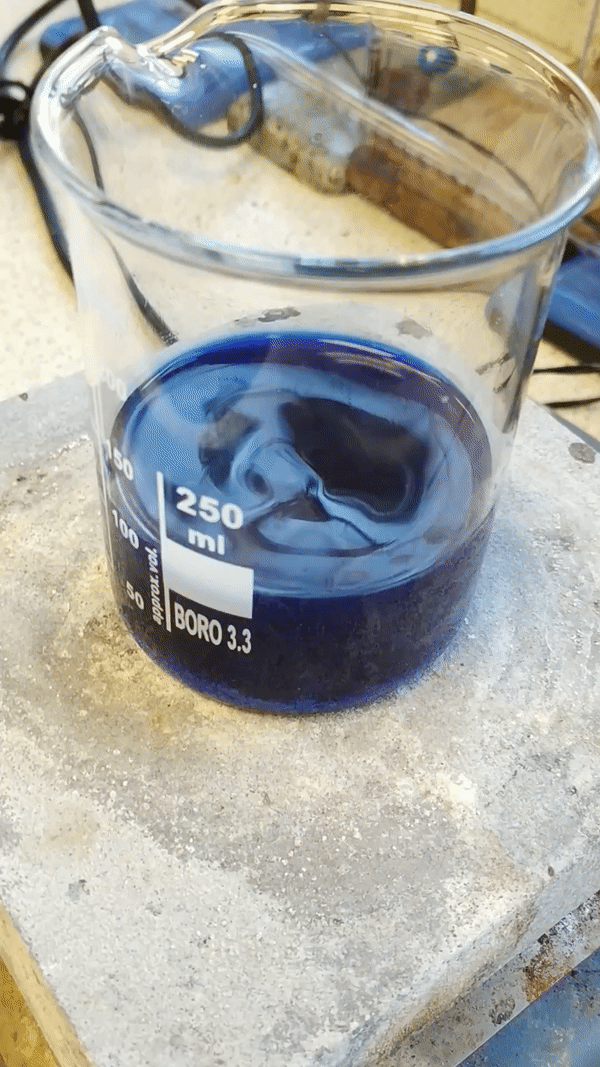[This post features my original artwork and botanical sketches]
I truly believe that revising for my upcoming exams and developing my understanding of the sciences is an enjoyable process, but when gentle dawn sunlight illuminates the vibrant azure bundles of flowers peppered throughout our garden, it takes the strength of every fibre in my being to not abandon my textbooks and immerse myself in the carpet of wild bluebells.
In two months, I’ll have sat all my AS exams and will finally be free to laze around in the grass with my cat and lie among the sea of indigo petals. Until then, I look to the shimmering haze of the bluebells as an oasis just fingertips away.

Recently, I rewarded my revision efforts by pressing an inflorescence and uncovering the chemistry behind their beautiful blue pigment*. The rich colour of the petals is not caused by a single true blue pigment but rather by the red pigment anthocyanin. The basic structure of the anthocyanin delphinidin is modified with pH shifts and prosthtic groups.
 Delphinidin is pH sensitive and turns red in acidic environments. A high pH must be maintained to ensure the molecular pigment is blue. Delphinidin is also malonated; two glucosyl groups, a malonyl group, and a coumaryl group are bonded to the pigment structure.
Delphinidin is pH sensitive and turns red in acidic environments. A high pH must be maintained to ensure the molecular pigment is blue. Delphinidin is also malonated; two glucosyl groups, a malonyl group, and a coumaryl group are bonded to the pigment structure.



The resulting compound, malonylawobanin, is responsible for the brilliant deep blue petals that don’t even fade after weeks of pressing.

I also consulted my copy of The Complete Herbal out of interest in the medicinal properties of this plant. Nicholas Culpeper was surprisingly brief in his writings of bluebells; he only refers to its somewhat styptic (blood clotting) qualities. From further research, I learnt that the bluebell’s intensely toxic nature has, understandably, limited its potential for therapeutic applications.
 One of the major toxic compounds present in bluebells are polyhydroxylated pyrrolidines (such as nectrisine) which are found in the viscous sap that seeps out of the plant’s nodding stems. These compounds are analogues of sugar but are actually potent glucosidase inhibitors. Due to its many -OH groups, the mammalian body mistakes nectrisine as a sugar and processes it as such – inadvertantly allowing the molecule to interfere with respiration.
One of the major toxic compounds present in bluebells are polyhydroxylated pyrrolidines (such as nectrisine) which are found in the viscous sap that seeps out of the plant’s nodding stems. These compounds are analogues of sugar but are actually potent glucosidase inhibitors. Due to its many -OH groups, the mammalian body mistakes nectrisine as a sugar and processes it as such – inadvertantly allowing the molecule to interfere with respiration.
In addition to this, polyhydroxylated pyrrolizidines, which have a similar chemical action to nectrisine, are toxic alkaloids that have been proven to poison livestock that have the misfortune of ingesting bluebells. Despite this, these compounds are now being considered for use in cancer therapeutics.
Most fascinatingly, bluebells contain a type of cardiac glycoside, Scillaren A, which can rapidly increase the output force of the heart. Heart cells, myocytes, contain protein pumps embedded in their cell membranes which actively transport sodium ions out of the cell to create an essential electrochemical gradient. In the heart, there is also a sodium – calcium ion exchanger which maintains the ion homeostasis. 
Cardiac glycosides, such as Scillaren A found in bluebells, inhibit the movement of sodium ions out of the cell by effectively disabling the ion pumps. This increases the concentration of sodium ions inside the myocytes which, in turn, increases the calcium ion concentration as sodium ions inside the cell are exchanged for calcium ions.
In myocytes, the accumulation of calcium increases the power with which the cells can contract (contractility) – increasing cardiac muscle contraction which can be crucial in controlling the heart rate in cases of arrhythmia and even chemically restarting the heart in atrial fibrillation.
The cardiac action of Scillaren A is stronger than that of the commonly used digoxin, which is derived from foxglove, and is ideal for situations in which digoxin alone is insufficient or the patient has a digitalis intolerance. Additionally, if an improper dosage is administered, Scillaren A is poisonous but, unlike many other cardiac glucosides, is non-lethal as it is poorly absorbed into the gut. The compound also has a very high therapeutic index as it is rapidly eliminated from the body. All of these qualities make bluebells a fundamentally desirable pharmaceutical source, however, since native bluebells are an endangered and protected species, bluebells cannot be harvested to produce medication.

Conservation efforts are essential to protect and preserve this fragile, flowering species so that we may be able to enjoy their magnificent appearance and benefit from their therapeutic value in the coming decades.
* White bluebells which lack pigmentation also exist albeit they are somewhat rare with only 1 in every 1000 native bluebells being white. Below is a pressed white bluebell I came across in Margate. 


















 ions]
ions]





 Curcumin is a polyphenol (an organic compound with multiple phenol units).
Curcumin is a polyphenol (an organic compound with multiple phenol units). 







